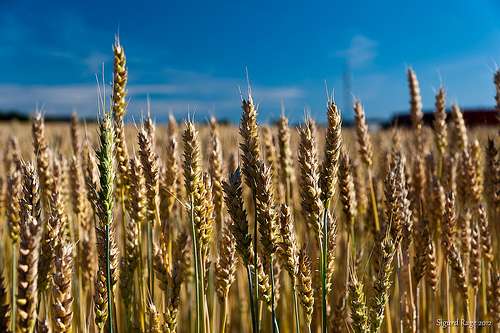Sacrificing agricultural research in the name of biosecurity

The image of Australian agriculture is that it is "clean and green" because biosecurity measures operate to keep a vast army of exotic pests and pathogens out of the country.
I would like to put forward the argument that the overzealous application of biosecurity measures is hindering agricultural research, restricting the flow of crop-protection measures and potentially increasing pest and disease burdens.
Losses to pest and pathogens in agricultural systems around the world are hard to quantify but is generally reckoned to average 15-30 per cent—less in temperate and developed regions and more in tropical and less developed areas.
We have good estimates of losses to disease in agriculture here due to a series of reports put out by the Grains Research and Development Corporation.
In wheat, diseases costs about $1bn and pests $800m out of a total crop value of about $10bn. Relative losses in barley and canola are similar but in pulses are much worse.
And this is despite the application of pesticides that cost about $1bn and a climate that is significantly less favourable for many diseases than in most other countries.
Tough quarantine regulations restrict the flow
Many new pathogens arise here. We have had an in-situ evolved epidemic of barley powdery mildew that has cost about $100m per annum over the last few years.
There are plenty of other pests and pathogens overseas that could potentially cause more damage if they got a foothold in Australia. For that reason Australian pathology researchers operate under quarantine regulations that surely must be the most stringent in the world.
But it is not clear whether the quarantine regulations either have stopped pests arriving or will be able to do so in the future. The sheer distance of Australia from other similar climes and the physical distance of airports from arable areas has probably had a much more significant effect on limiting the flow of pests.
Importation proves too costly or prohibited
The regulations either forbid or significantly increase the cost of importing pests and pathogens for research purposes. These regulations apply to all pathogens whether the species already exists here or not.
Even if the species exists here, the isolate being imported might have a different virulence spectrum and, so the argument goes, this might cause a disease of cultivars that are currently resistant. Experiments to disprove this can never realistically be comprehensive.
The containment level for an overseas isolate of a fungal pathogen that doesn't produce airborne spores is the same as would apply to a patient with the Ebola virus. These regulations hamper the effectiveness of the Australian crop-protection research community and ultimately harms our agricultural industry.
I propose that the biosecurity regulations should take into account not just the risk of the pathogen escaping and the hazard that would ensue but also the potential benefit the research could bring.
Provided by Science Network WA















